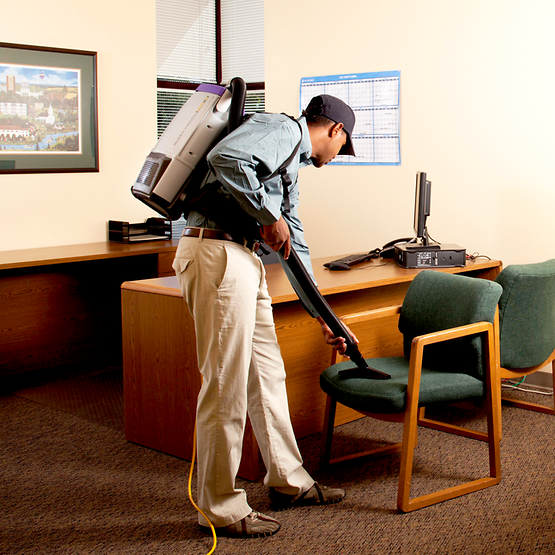Walk into any modern office, hotel lobby, or healthcare facility, and you’ll likely be greeted by carefully chosen furniture meant to project professionalism, comfort, and cleanliness. But over time, even the most stylish commercial furniture can become dull, stained, and unsanitary—especially when routine cleaning is limited to a quick vacuum. In reality, keeping upholstery and furniture in pristine condition requires a deeper understanding of materials, chemistry, and environmental science. This is where the true science behind effective commercial furniture cleaning comes into play.
It’s a misconception that vacuuming alone is sufficient to maintain office chairs, couches, and partitions. While it does help remove surface-level dust and debris, it doesn’t address embedded grime, allergens, bacteria, or long-term fabric deterioration. For businesses aiming to maintain a clean, healthy, and professional environment, understanding the advanced science of commercial furniture cleaning is essential.
The Microbiology of Commercial Furniture
Office furniture is a hotspot for microbial activity. Daily use exposes upholstery to sweat, skin oils, food crumbs, dust mites, and airborne pollutants. Over time, these contaminants settle deep into fibers, creating the perfect environment for bacteria, fungi, and allergens to thrive. A study by the University of Arizona found that office chairs can harbor more bacteria than a toilet seat, especially if not cleaned regularly.
This microbial load not only contributes to unpleasant odors but can also trigger allergies and respiratory problems among employees and guests. Commercial furniture cleaning goes beyond surface aesthetics—it’s a key component of workplace hygiene.
Fabric Science and Material Sensitivity
Commercial furniture is often made from a range of materials—cotton blends, wool, leather, vinyl, and synthetics like polyester or olefin. Each of these materials reacts differently to moisture, heat, and cleaning agents. For instance, wool is sensitive to alkaline cleaners and can shrink or become discolored if exposed to excessive moisture. On the other hand, synthetic fabrics may resist stains better but can still trap oils and airborne particles.
Effective commercial furniture cleaning relies on identifying fabric types and selecting appropriate cleaning methods. Professionals are trained to test for colorfastness, moisture sensitivity, and fiber durability before applying any treatment. This scientific approach prevents unintentional damage while maximizing cleanliness.
Chemistry Behind Cleaning Solutions
Cleaning solutions are more than just soapy water—they’re carefully formulated mixtures designed to break down specific types of dirt and grime. Acidic cleaners are ideal for breaking down mineral stains and soap scum, while alkaline solutions are better suited for cutting through grease and oils. Neutral pH cleaners are often used for general maintenance on delicate materials.
In commercial furniture cleaning, the wrong chemical balance can lead to fabric damage, fading, or a sticky residue that attracts more dirt over time. That’s why professional services rely on chemistry expertise to choose the right solutions for each material and stain type. Moreover, many cleaning agents now incorporate enzyme-based formulas that digest organic stains at the molecular level, offering superior results without harsh chemicals.
The Role of Heat and Moisture in Steam Cleaning
Steam cleaning is one of the most effective methods in commercial furniture cleaning, particularly for upholstered items. It uses high-temperature water vapor to penetrate fibers and loosen grime, bacteria, and allergens. The steam also kills most germs and dust mites on contact without the need for excessive chemical use.
However, the use of steam isn’t as simple as it seems. The temperature, pressure, and dwell time must be carefully controlled. Too much heat can warp synthetic fabrics or shrink natural ones, while too much moisture can lead to mold growth inside cushions and padding. Experienced cleaners adjust equipment settings based on the furniture’s construction and fabric to ensure a safe, deep clean.
Drying Science and Indoor Air Quality
An often-overlooked part of commercial furniture cleaning is the drying process. Inadequate drying can lead to musty odors, mildew, and even structural damage to furniture frames. High-traffic commercial environments require fast turnaround times, so drying techniques have become more advanced.
Professional cleaners use air movers, dehumidifiers, and moisture meters to ensure thorough drying without prolonged exposure to humidity. This not only protects the furniture but also helps maintain optimal indoor air quality, reducing the risk of mold spores circulating through HVAC systems.
The Environmental Impact of Cleaning Practices
Sustainability is an increasingly important consideration in commercial operations. Many cleaning products used in the past contained volatile organic compounds (VOCs) and phosphates, which posed health risks and contributed to environmental pollution. Today, commercial furniture cleaning services are turning to eco-friendly, biodegradable products that meet standards set by organizations like Green Seal and the EPA.
Additionally, modern cleaning machines are designed to use less water and energy while achieving better results. By understanding the environmental science behind cleaning choices, businesses can meet sustainability goals without compromising cleanliness or safety.
Customized Maintenance Plans Based on Science
A one-size-fits-all approach doesn’t work when it comes to commercial furniture cleaning. High-traffic offices may require monthly deep cleaning, while lower-use areas could go longer between services. Cleaning professionals rely on usage data, environmental factors, and material science to create customized maintenance schedules.
Factors such as climate (humidity affects drying time), occupancy rate, and specific business needs (like medical vs. retail environments) are all considered in designing an effective cleaning strategy. The goal is to balance cleanliness, cost-efficiency, and longevity of furniture investments.
Conclusion: Cleaning with Confidence
Effective commercial furniture cleaning is a complex process rooted in science—not guesswork. From understanding microbiology and material chemistry to mastering the physics of moisture and heat, professional cleaners apply a wide range of scientific principles to ensure that every chair, couch, and cushion is cleaned safely and thoroughly.



















